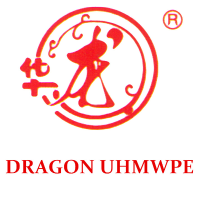
cyclone overflow bend in uhmwpe material
uhmwpe's advantage as the material for cyclone overflow bend ? Using Ultra-High Molecular Weight Polyethylene (UHMWPE) for a cyclone overflow bend offers several advantages due to its unique material properties. Here are some of the key advantages: Abrasion Resistance: UHMWPE is known for its exceptional abrasion resistance. In the context of a cyclone overflow pipe, where particles may impact and wear down the surface, UHMWPE can withstand abrasive forces better than many other materials. Chemical Resistance: UHMWPE is highly resistant to a wide range of chemicals. In applications involving corrosive materials or chemical processes, UHMWPE can maintain its structural integrity and resist degradation over time. Low coefficient of friction: The low coefficient of friction of UHMWPE promotes smooth material flow through the cyclone overflow discharge bend. This property helps reduce the risk of blockages and improves the overall efficiency of the cyclone system. Impact strength: UHMWPE possesses high impact strength, providing durability against impacts or collisions with particles within the cyclone. This is particularly important in handling materials with varying sizes and shapes. Non-stick surface: UHMWPE has a non-stick surface, minimizing material buildup and reducing the likelihood of blockages in the cyclone overflow elbow. This property contributes to the continuous and efficient operation of the cyclone system. When considering UHMWPE for a cyclone overflow bend, it's important to assess the specific requirements of the application, including the type of materials being processed, operating conditions, and any regulatory considerations. UHMWPE's unique combination of properties makes it a favorable choice in situations where wear, chemical resistance, and smooth material flow are critical factors.
Keywords:
Classification:
Description
uhmwpe's advantage as the material for cyclone overflow bend ?
Using Ultra-High Molecular Weight Polyethylene (UHMWPE) for a cyclone overflow bend offers several advantages due to its unique material properties. Here are some of the key advantages:
Abrasion Resistance:
UHMWPE is known for its exceptional abrasion resistance. In the context of a cyclone overflow pipe, where particles may impact and wear down the surface, UHMWPE can withstand abrasive forces better than many other materials.
Chemical Resistance:
UHMWPE is highly resistant to a wide range of chemicals. In applications involving corrosive materials or chemical processes, UHMWPE can maintain its structural integrity and resist degradation over time.
Low coefficient of friction:
The low coefficient of friction of UHMWPE promotes smooth material flow through the cyclone overflow discharge bend. This property helps reduce the risk of blockages and improves the overall efficiency of the cyclone system.
Impact strength:
UHMWPE possesses high impact strength, providing durability against impacts or collisions with particles within the cyclone. This is particularly important in handling materials with varying sizes and shapes.
Non-stick surface:
UHMWPE has a non-stick surface, minimizing material buildup and reducing the likelihood of blockages in the cyclone overflow elbow. This property contributes to the continuous and efficient operation of the cyclone system.
When considering UHMWPE for a cyclone overflow bend, it's important to assess the specific requirements of the application, including the type of materials being processed, operating conditions, and any regulatory considerations. UHMWPE's unique combination of properties makes it a favorable choice in situations where wear, chemical resistance, and smooth material flow are critical factors.

Previous Article
Next Article
Previous Article
Next Article
Recommended Products
Contact Us
Mobile/Wechat/WhatsApp: +86 188 6354 9177
Email: sales@dragonuhmwpe.com
Address: Xiangguang Economic Development Zone, Yanggu, Shandong, China
Postcode: 252300

